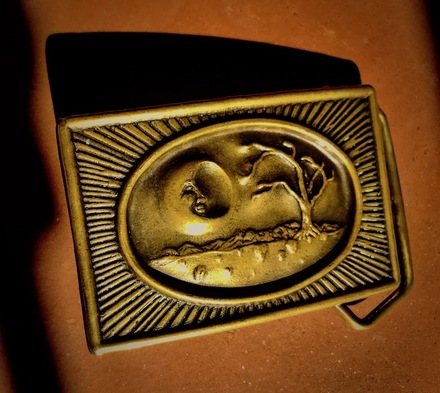Now is a traditional time for remembering those who have passed, and their persisting influence on us. It's harvest season, too, sign of continuation -- what grew has been buried, but returns every spring, never really gone.
As California burns again, I snap on the brass belt buckle purchased in a downtown shop 30 years ago. On it: the moon, desert mountains, a withered tree, shrubs. Halloweenish.
That buckle could depict T.S. Eliot's "The Waste Land": "Mountains of rock without water." "That corpse you planted last year in your garden, has it begun to sprout?" "I will show you fear in a handful of dust." The part of the poem called "The Fire Sermon" is actually about the promise of water. The next part, though, is called "Death by Water." Fire and flood. Fire and flood. A hard cycle, but life goes on.
Eliot footnoted that "The Waste Land" was inspired in part by Jessie L. Weston's 1920 book "From Ritual to Romance," which suggested that the myth of the Grail -- bound up with a frail king and the quest to return water to a parched land -- descended from rites of vegetation renewal dating back to prehistoric times. Weston implied that the same connection applies to the myth of Christ, the dying and rising god, whose life-giving fluid fills the Grail. Before Jesus was Christ, he was Osiris, Attis and Adonis, who themselves had once arrived as newcomers to the chain, nothing more (but nothing less) than symbolic sprouts of grain.
So we revisit our gods and ghosts. The Halloween ritual insists we engage with them -- engage or be haunted, because they're not going away.
* * *
Since this is a music site, we must mention Eliot's bit about "the pleasant whining of a mandoline." And please consider the most Halloweenish, cyclical and terrifying song I can think of, Nico's peyote-generated "Lawns of Dawns." The Lawns might have been of the Forest variety.
PHOTO BY FUZZY MURK.

